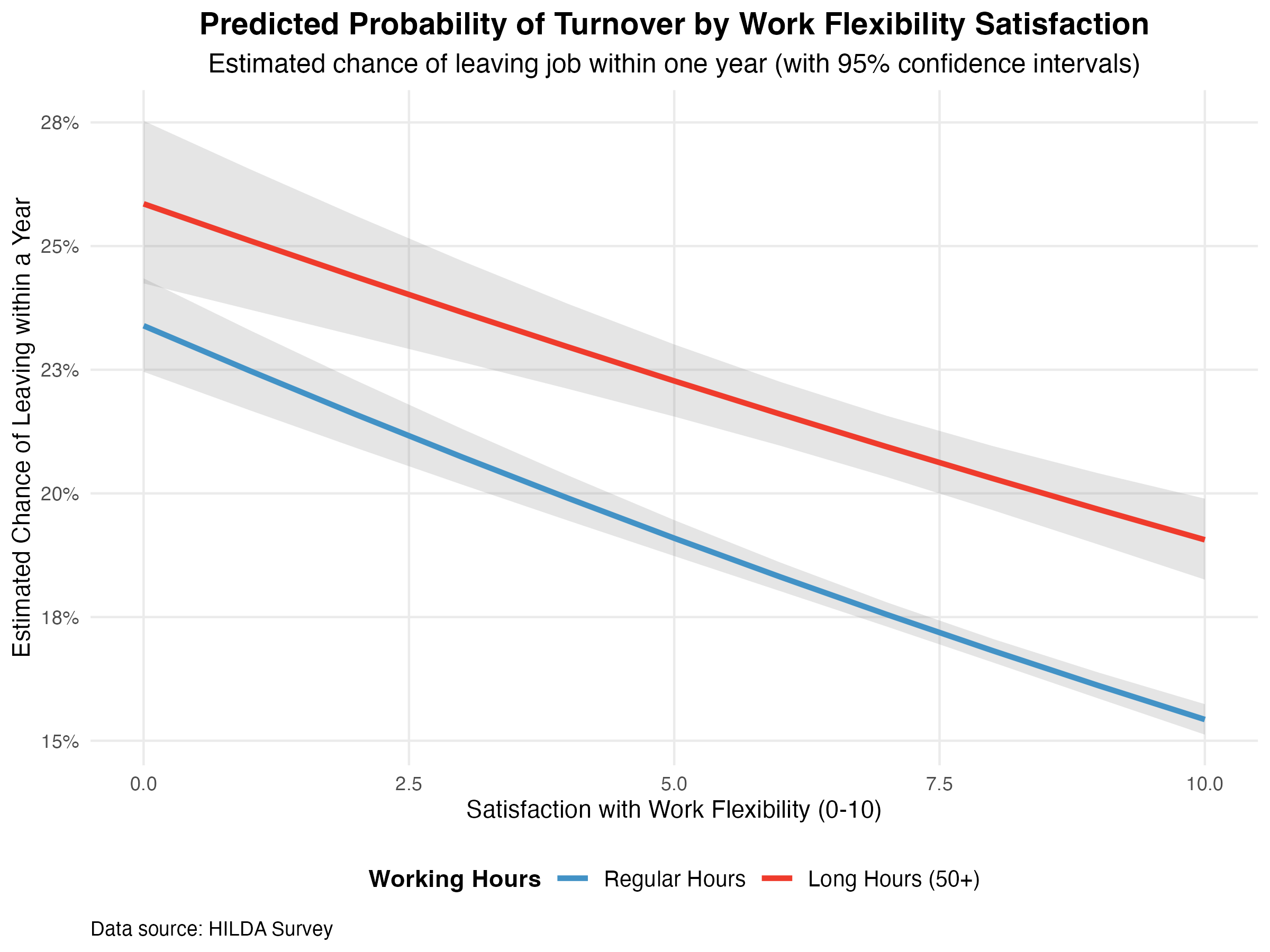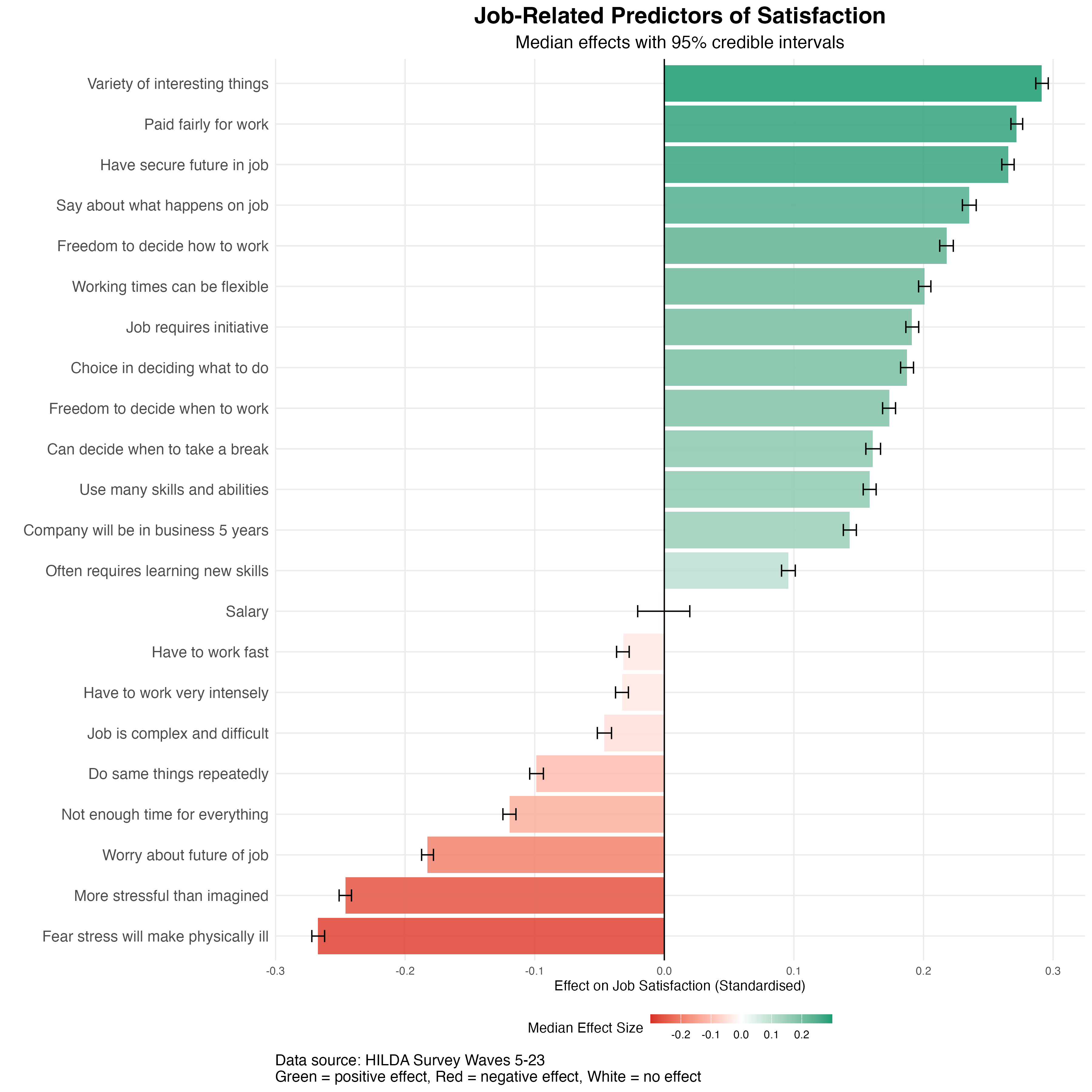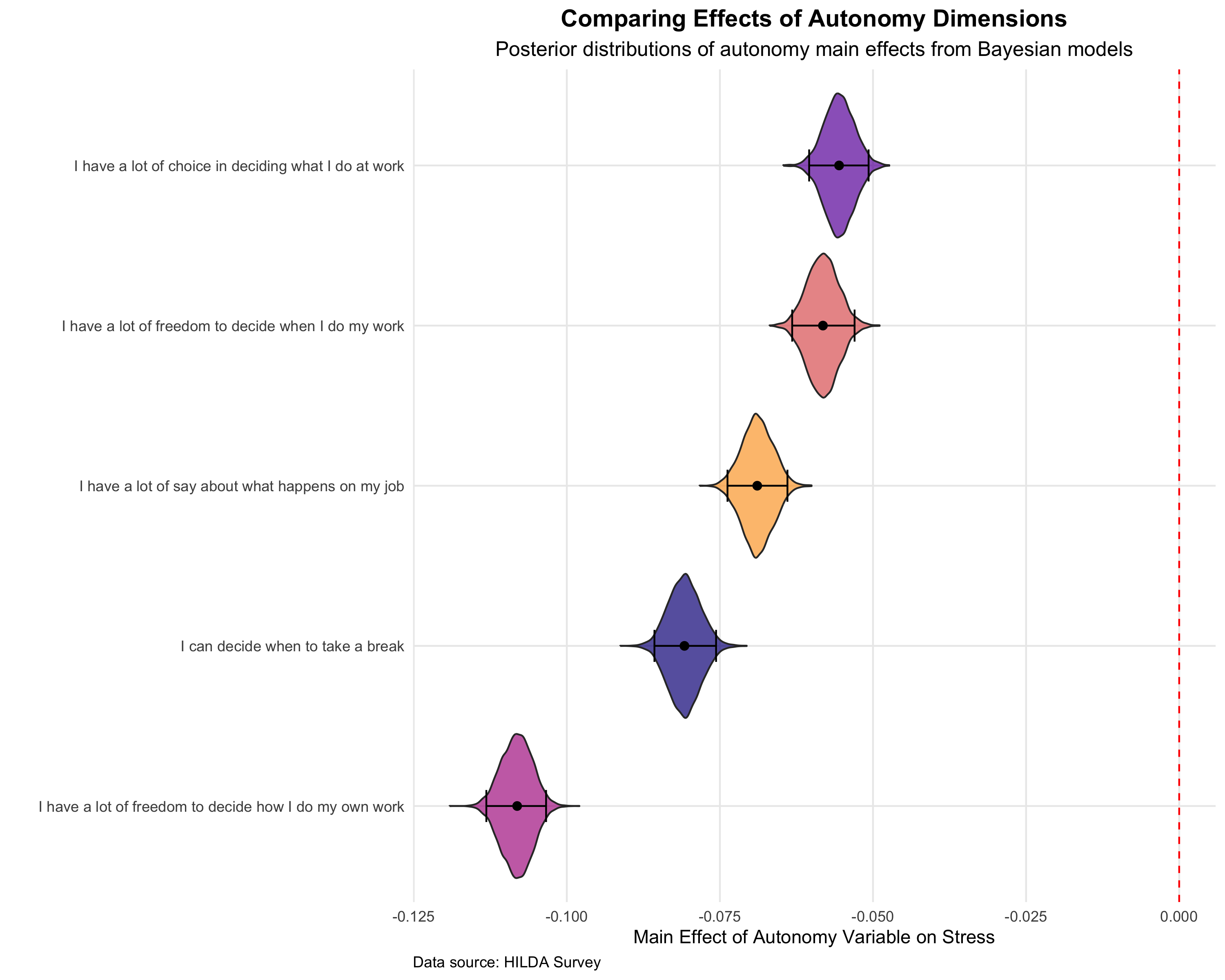Does Offering Flexibility Mitigate the Impact of Long Working Hours on Retention?
We’ve all heard the saying, “Employees don’t leave jobs, they leave managers” – but what about leaving due to overwork or lack of flexibility? Imagine two employees: One enjoys the freedom to adjust their schedule as needed, but often logs 55-hour weeks. The other works a strict 9-to-5 with no flexibility at all. Who is more likely to quit? Burnout from long hours or frustration from rigid schedules are both known to drive turnover. To pinpoint which matters more (and whether a flexible schedule can offset heavy workloads), we analysed two decades of Australian data from the Household, Income, and Labour Dynamics in Australia survey, which has tracked over 20,000 people living in Australia since 2001. This data offers unique insights into how work-life balance factors affect employee retention.
Flexibility and Long Hours – What the Data Shows
Our analysis focused on 21,217 workers followed over time since 2001, examining whether they changed jobs each year. We modelled the odds of an employee leaving their job within the next year as a function of “flexibility satisfaction” (how satisfied they were with their work schedule flexibility) and long work hours (whether they worked more than 50 hours per week), while controlling for gender and age.
The graph below shows the predicted employee turnover rate (vertical axis) as a function of how satisfied the employee is with the flexibility offered by their employer (horizontal axis, from 0 to 10), for two groups – blue for normal hours and red for long hours (>50/week). Both lines slope downward, indicating that higher flexibility satisfaction corresponds to lower turnover risk. However, the red line is consistently higher than the blue line across all flexibility levels, revealing that consistently working 50+ hours a week was associated with approximately 9% higher odds of leaving compared to those working standard hours. At low flexibility (left side), turnover is highest (around 24% for long hours, 21% for normal hours). At maximum flexibility (right side), turnover drops for both groups (to about 18% for long hours, 15% for normal hours), but the gap remains.

We also tested whether flexibility could buffer the negative impact of long hours but found no significant interaction effect - even employees with high flexibility who worked long weeks were still more likely to quit than those working normal hours. This illustrates that working long hours increases attrition risk regardless of flexibility, and while improving flexibility helps reduce turnover, it cannot entirely overcome the impact of excessive workloads.
Overwork and Flexibility: Finding the Balance
These findings send a clear message: work-life balance isn’t one-dimensional. You can’t simply throw flexible schedules at employees and ignore the number of hours they’re working. Flexibility does make a big difference – it empowers employees to juggle their job with life’s demands, thereby reducing stress and giving people fewer reasons to quit. An accommodating workplace (whether through remote work options, adjustable hours, or generous leave policies) fosters loyalty because employees feel trusted and in control of their time. Our data shows a strong retention benefit to offering this flexibility effect.
However, burning the midnight oil still carries a cost. Long hours can lead to exhaustion, health issues, and strained personal relationships – no amount of schedule control completely fixes that. It appears there is a limit to “flexibility as a perk”: if an employee is regularly putting in 55-60 hours, even with a flexible schedule, they may eventually hit a breaking point.
The absence of an interaction effect in the data tells us that each factor – flexibility and hours – independently affects turnover. High flexibility doesn’t magically neutralise the impact of overwork. Conversely, capping hours alone, without some worker autonomy, also leaves a retention opportunity on the table.
The ideal scenario for retention is high flexibility coupled with reasonable hours. Employees who can manage their work-life demands and aren’t stretched too thin are the most likely to stay. If either element is out of balance (zero flexibility or extreme hours), retention suffers. For employers, the lesson is to address both sides of the equation: create flexible cultures but also monitor workload creep.
Keeping Your Team Onboard: What Employers Can Do
Armed with this knowledge, organisations can take proactive steps to improve retention:
-
Promote Flexible Work Options: If you haven’t already, consider policies like flexible schedules, remote work, or compressed work weeks. Ensure employees are aware of and encouraged to use these options without stigma. Managers should lead by example (e.g. adjusting their own schedules for family or personal needs) to show it’s truly acceptable. Higher perceived flexibility should directly translate into higher retention, as our data indicates.
-
Curb Chronic Overtime: Pay attention to teams or roles where 50+ hour weeks are the norm. This is a red flag for burnout and future turnover. Intervene by redistributing workloads, hiring additional staff, or setting clearer expectations that long hours are for occasional surges only, not a constant requirement. Sometimes it’s cultural – if being the last to leave the office is praised, reconsider that message. Reward efficiency and outcomes, not just hours logged.
-
Monitor Workload and Satisfaction: Use employee surveys to gauge flexibility satisfaction and burnout levels. If you see low flexibility scores or reports of overwork, act fast. Regular check-ins can also help; ask employees if they feel able to balance work with personal life, and if not, what would help. This not only identifies problems early but shows employees you take work-life balance seriously.
-
No One-Size-Fits-All: Recognise that needs differ. Some employees don’t mind extra hours if they can do them on their own schedule; others fiercely protect their evenings. Tailor solutions where possible – maybe an hour cap for one person and a flex-time arrangement for another. The goal is the same: prevent burnout and frustration from driving good people away.




